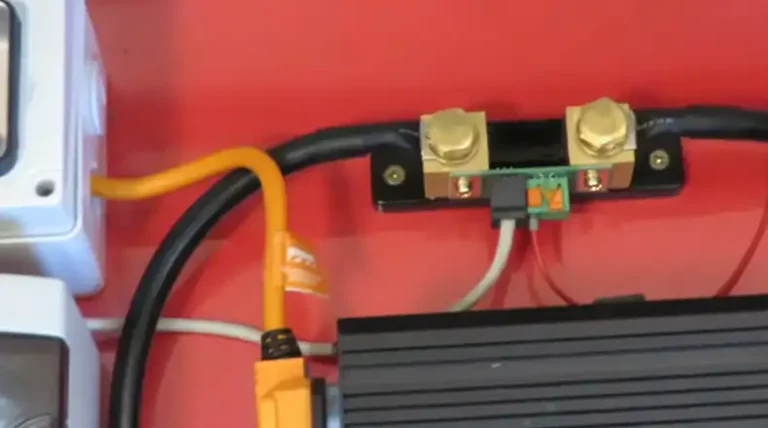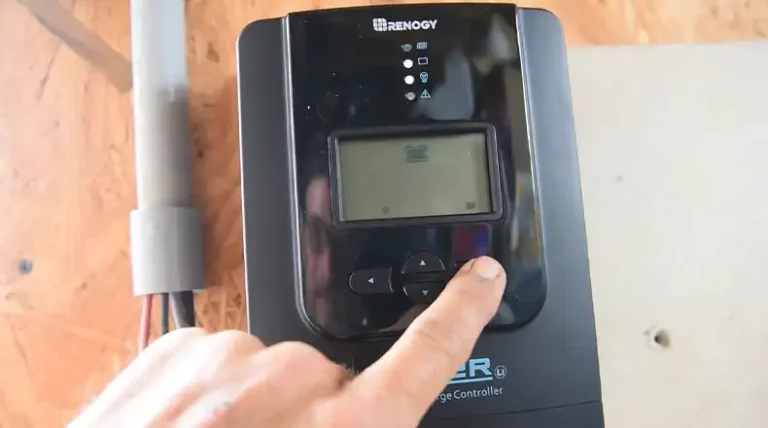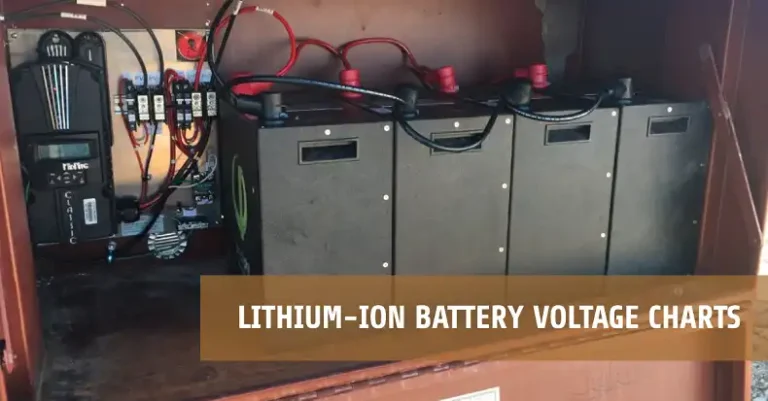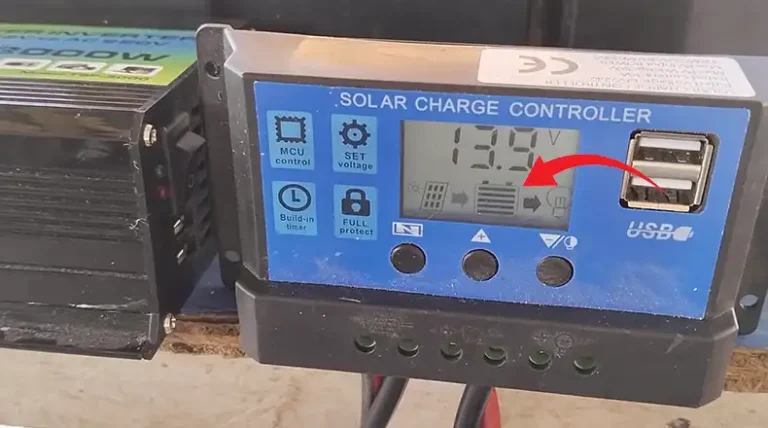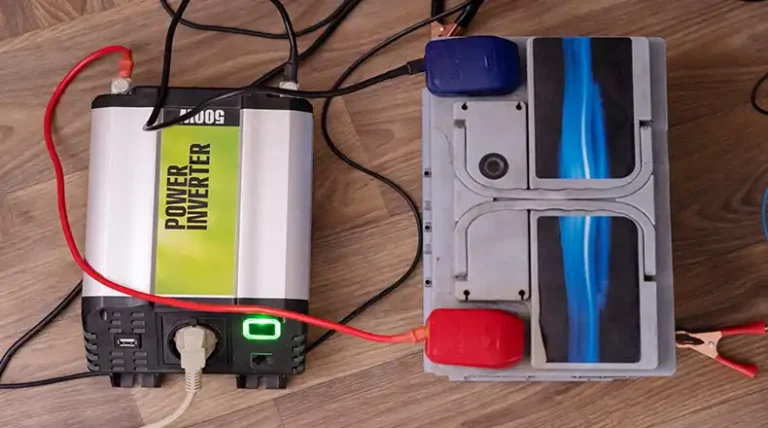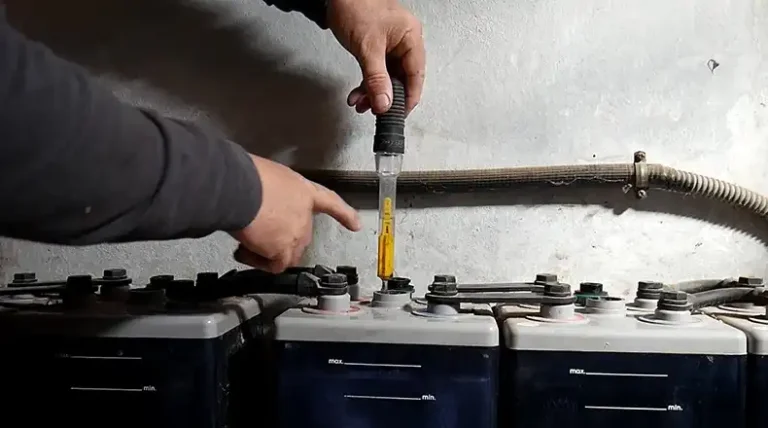Tesla vs Enphase Solar Batteries | What’s The Best Battery
I’ve been working with solar tech for years, and it’s always exciting to see what’s new. Today, we’re looking at two big names in solar batteries: Tesla and Enphase. These companies are working hard to win over homeowners who want to get the most out of their solar panels.
So, why are solar batteries a big deal? Well, think about it this way. Your solar panels make energy during the day when the sun is shining. But what about at night? Or when the power goes out? That’s where batteries come in. They store that solar energy so you can use it later. Pretty cool, right? Now, let’s see how Tesla and Enphase stack up against each other. Which one is better at storing and using that solar power? Let’s find out!
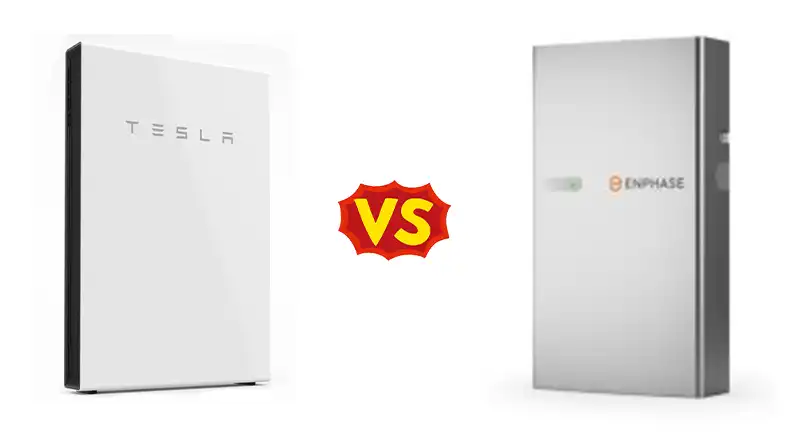
Side by Side Differences Between Tesla and Enphase Popular Solar Batteries
Before we dive into the details, let’s take a bird’s eye view of how these two stack up against each other. Trust me, this comparison is juicier than the latest celebrity gossip!
Storage Capacity
When it comes to storage capacity, it’s like comparing a big gulp to a regular soda. The Tesla Powerwall 2 and 3 come packing a whopping 13.5 kWh of storage. That’s enough juice to keep your Netflix binge going for hours!
On the Enphase side, we’ve got the Encharge 10 with 10.5 kWh and the Encharge 5P with 5.0 kWh. Now, don’t let those numbers fool you. While they might seem smaller, Enphase has a trick up its sleeve – scalability. But more on that later!
Battery Chemistry
Now, let’s talk chemistry. No, not the kind that makes fireworks on a first date, but the kind that makes these batteries tick.
Tesla’s Powerwall 2 uses a Nickel-Manganese-Cobalt (NMC) battery. It’s like the sports car of batteries – high energy density but a bit temperamental. The Powerwall 3, however, is rumored to be switching to Lithium Iron Phosphate (LFP). This is like upgrading from a sports car to a reliable family SUV – not as flashy, but safer and longer-lasting.
Enphase, on the other hand, has been cruising along with LFP chemistry in both its Encharge 10 and 5P models. It’s like they saw the future and decided to get there first!
Warranty
Both Tesla and Enphase offer a 10-year warranty on their batteries. It’s like they’re both saying, “We’ve got your back for a decade, buddy!” But wait, Enphase throws in a curveball. They offer an option to extend the warranty to 15 years. It’s like getting an extra 5 years of peace of mind for free (well, not exactly free, but you get the idea).
Continuous Power Output
Here’s where things get interesting. The Tesla Powerwall 2 can continuously output 5 kW of power. That’s enough to keep your essential appliances running smoothly. But hold onto your hats, folks! The Powerwall 3 cranks it up to 11.5 kW. It’s like going from a gentle stream to a roaring river!
Enphase takes a different approach. Both the Encharge 10 and 5P can output 3.84 kW continuously. It might seem less impressive at first glance, but remember, Enphase is all about that modular life. You can stack these bad boys to increase your output.
Peak Power Output
Sometimes you need a little extra oomph, and that’s where peak power comes in. The Powerwall 2 can surge up to 7 kW for short periods. But the Powerwall 3? It’s like unleashing the Kraken with a whopping 30 kW peak output!
Enphase isn’t slouching either. The Encharge 10 can hit 5.7 kVA for 10 seconds, while the 5P can reach 7.68 kVA for 3 seconds. It’s like having a turbo boost for your home energy!
Inverter
Now, this is a big difference between the two. The Powerwall 2 doesn’t come with an inverter. It’s like buying a car without wheels – you’ll need to add them separately. The Powerwall 3, however, comes with a built-in inverter. It’s a complete package, ready to roll!
Enphase takes a different route. Their batteries work with Enphase microinverters. It’s like having a tiny brain for each solar panel. This can lead to better efficiency and easier troubleshooting.
Future-Proofing
Tesla’s Powerwall is compatible with future DC expansion packs. It’s like buying a phone with expandable storage – you can upgrade later if you need to.
Enphase is looking towards a future with bidirectional EV charging. Imagine using your car as a giant battery for your house. The future is now, folks!
Roundtrip Efficiency
This is all about how much of the energy you put in actually comes back out. The Powerwall 2 boasts a 90% efficiency, which is pretty good. But the Powerwall 3? It cranks it up to 97%! That’s like getting 97 cents back for every dollar you put in.
Enphase isn’t far behind with a 96% roundtrip efficiency. It’s like they’re in a race to see who can waste the least amount of energy!
Summary
| Feature | Tesla Powerwall 2 / 3 | Enphase Battery (Encharge 10 / 5P) |
| Storage Capacity | 13.5 kWh | 10.5 kWh (Encharge 10) / 5.0 kWh (5P) |
| Battery Chemistry | Nickel-Manganese-Cobalt (Powerwall 2) / Likely Lithium Iron Phosphate (Powerwall 3) | Lithium Iron Phosphate (LFP) |
| Warranty | 10 years | 10 years, extendable to 15 years |
| Continuous Power Output | 5 kW (Powerwall 2) / 11.5 kW (Powerwall 3) | 3.84 kW (Encharge 10) / 3.84 kVA (5P) |
| Peak Power Output | 7 kW (Powerwall 2) / 30 kW (Powerwall 3) | 5.7 kVA for 10 seconds (Encharge 10) / 7.68 kVA for 3 seconds (5P) |
| Scalability | Up to 10 Powerwalls | Up to 40 Enphase batteries |
| Inverter | No inverter ( Powerwall 2) / Built-in (powerwall 3) | Requires Enphase microinverters |
| Weather Resistance | Yes, water-resistant | Yes, operates in extreme weather |
| Future-Proofing | Compatible with future DC expansion packs | Bidirectional EV charging in the future |
| Roundtrip Efficiency | 90% (Powerwall 2) / 97% (Powerwall 3) | 96% |
Our Verdict – Which One is Better?
Alright, drum roll, please! After diving deep into the specs and features of both Tesla and Enphase solar batteries, you might be expecting me to declare a clear winner. But here’s the thing – it’s not that simple.
Both Tesla and Enphase have brought their A-game to the table. They’ve each got their strengths, and the best choice really depends on your specific needs and situation. It’s like choosing between chocolate and vanilla ice cream – they’re both delicious, but your preference might depend on your taste (and maybe your mood that day).
Let’s break it down:
If you’re looking for raw power and sleek design, Tesla’s Powerwall might be your jam. The Powerwall 3, in particular, is a powerhouse with its high continuous and peak power output. It’s like having a sports car in your garage – flashy, powerful, and sure to impress the neighbors.
On the other hand, if flexibility and scalability are your top priorities, Enphase could be the way to go. Their modular approach means you can start small and expand as your needs grow. It’s like building with Legos – you can keep adding pieces to create your perfect energy solution.
Enphase also gets a gold star for their extendable warranty and their use of Lithium Iron Phosphate batteries across their range. It’s like they’re saying, “We’re in it for the long haul, buddy!”
But here’s the kicker – the best choice for you might come down to what else you’ve got going on with your solar setup. If you’re already using Enphase microinverters with your solar panels, sticking with Enphase for your battery could make for a more seamless integration. It’s like keeping all your smart home devices in the same ecosystem – everything just works better together.
Wrapping Up
At the end of the day, both Tesla and Enphase are solid choices. They’re both pushing the boundaries of what’s possible with home energy storage, and that’s exciting for all of us solar enthusiasts. So, what’s my advice? Take a good look at your energy needs, your budget, and your future plans. Think about what features matter most to you. And don’t be afraid to chat with a local solar installer – they can give you the lowdown on what works best in your area.
Stay sunny, folks!

